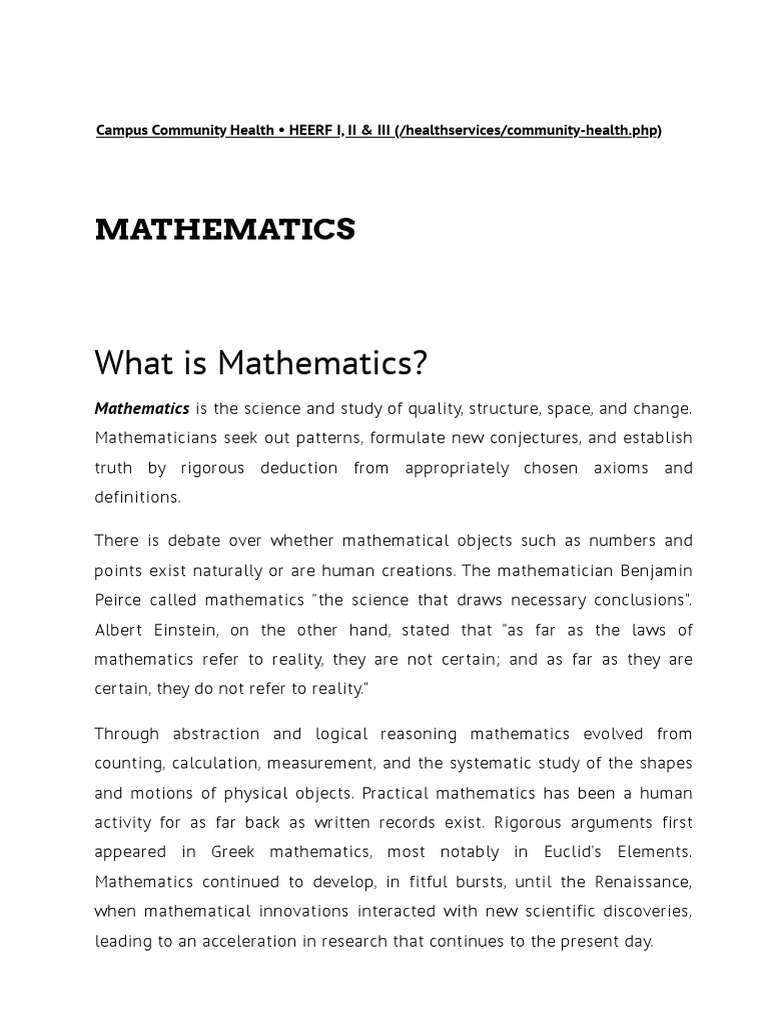Mathematics, often regarded as the language of the universe, is akin to a vast and intricate tapestry woven from threads of logic, precision, and creativity. To fathom this grand design, one must embark on a journey that balances methodical inquiry with intuitive exploration. This treatise endeavors to elucidate the essence of mathematics and calculation, unraveling their complexities through multifaceted lenses.
At its core, understanding mathematics is not merely about acquiring computational prowess; it is about engaging with numbers and symbols as one would with a symphony. Each notation, each equation, can be likened to a musical note, harmonizing to create a larger, coherent narrative. The first step in this journey is to cultivate a robust foundational knowledge, much like an architect who meticulously lays a blueprint before constructing an edifice.
The building blocks of mathematical comprehension lie in the fundamental operations: addition, subtraction, multiplication, and division. Mastery of these operations is analogous to learning the alphabet before one can compose poetry. By recognizing that these basic operations serve as the substrates of more elaborate structures, learners can begin to appreciate the elegance of arithmetic. Exploration of real-world applications, from budgeting personal finances to calculating distances on maps, imbues these abstractions with significance, transforming the mundane into the extraordinary.
As one progresses, the journey into the realm of algebra and geometry unfolds. Here, calculation transcends pure computation, morphing into an exploration of relationships and spatial reasoning. Algebra, in particular, stands as a monument to the power of abstraction. Variables become vessels of meaning, allowing one to explore unknown territories of mathematical thought. Much like an artist who interprets the world through the prism of their unique perspective, the algebra student learns to manipulate symbols to express universal truths.
Geometry, with its enchanting interplay of shapes, lines, and angles, represents a different facet of mathematical beauty. The study of geometry invites individuals to visualize mathematical principles, bridging the chasm between the theoretical and the tangible. Engaging with geometric concepts can evoke a sense of wonder, as one discovers properties that govern not only flat surfaces but also the curvilinear complexities of higher dimensions. Visualizing these concepts is akin to navigating a new landscape, where one uncovers hidden truths and latent possibilities.
Following the foundational stones of algebra and geometry, the realms of calculus beckon, offering a deeper understanding of change and motion. Calculus is a profound and multifaceted discipline, intimately connected with the infinitesimal—those elusive quantities that approach zero. It is here that the beauty of limits, derivatives, and integrals emerges, inviting the mathematician to dance with the ebb and flow of continuous change. The metaphor of a river, with its ever-shifting currents and depths, aptly encapsulates the essence of calculus. To master it is to learn to ride the tides of complex ideas, harnessing their potential to analyze phenomena ranging from the orbits of celestial bodies to the optimization of resources in engineering.
As one delves further into mathematical inquiry, the elegance of statistics and probability unfolds. These domains illuminate the undercurrents of uncertainty, providing tools to decode the randomness that pervades the universe. The statistical approach equips individuals to make informed decisions, draw meaningful conclusions, and understand phenomena through the lens of data. Engaging with probability is akin to standing on the edge of a vast ocean, contemplating the waves of chance and predicting their trajectory. Through a careful analysis of patterns and trends, one learns to navigate the unpredictable, bridging the gap between chaos and order.
Mathematics, in its entirety, possesses an intrinsic allure. It is a dialect that transcends cultural boundaries, connecting individuals across the globe through shared symbols and concepts. Embracing this universality, one can uncover the socio-cultural implications that mathematics weaves into the fabric of society. From ancient civilizations that utilized geometry to erect monumental structures to contemporary applications in artificial intelligence, the marriage of mathematics and humanity is both profound and indispensable.
Moreover, the act of engaging with mathematics fosters critical thinking and problem-solving skills—capacities that extend far beyond academic pursuits. This cognitive toolkit, cultivated through the rigorous exploration of mathematical principles, empowers individuals to approach real-world challenges with a systematic mindset. In a world increasingly dominated by complex systems and data-driven decisions, possessing a mathematical acumen becomes a vital asset.
Ultimately, the journey through mathematics is as much about the tapestry of knowledge as it is about the pursuit of understanding. Each individual’s path may be unique, shaped by personal experiences and contexts; yet, the essence remains universal. The metaphor of a poem arises again, where each stanza—the foundational concepts, the rhythmic patterns of algebra, the vivid imagery of geometry, the fluid stanzas of calculus, and the unpredictable verses of statistics—forms a cohesive whole.
In navigating this intellectual landscape, one discovers that mathematics is not a mere collection of algorithms and formulas, but rather a profound exploration of the frameworks that govern existence. By fostering curiosity and encouraging exploration, individuals can unlock the door to the wondrous world of mathematics, embarking on a lifelong journey of discovery, insight, and a deeper understanding of the intricate calculations that shape our reality.












